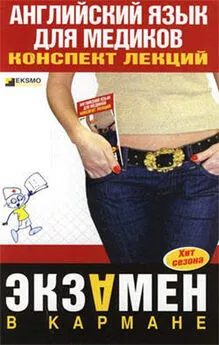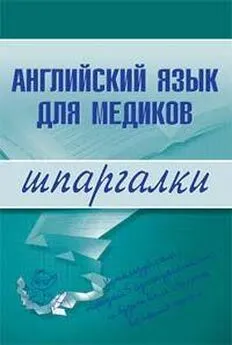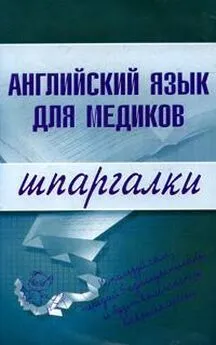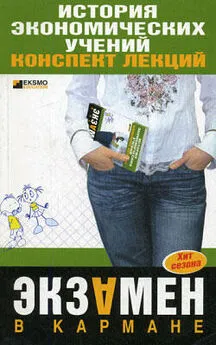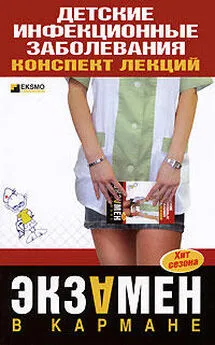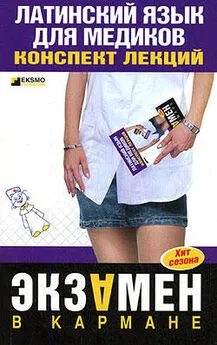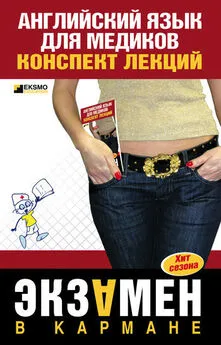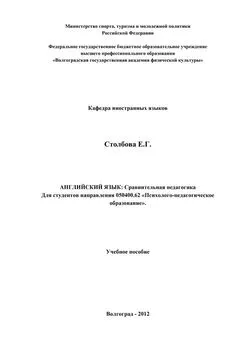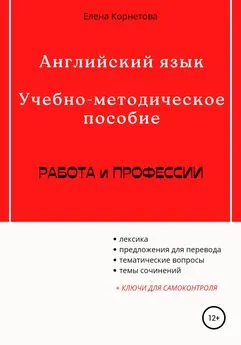Елена Беликова - Английский язык для медиков: конспект лекций
- Название:Английский язык для медиков: конспект лекций
- Автор:
- Жанр:
- Издательство:Конспекты, шпаргалки, учебники «ЭКСМО»b4455b31-6e46-102c-b0cc-edc40df1930e
- Год:2007
- Город:Москва
- ISBN:978-5-699-20181-5
- Рейтинг:
- Избранное:Добавить в избранное
-
Отзывы:
-
Ваша оценка:
Елена Беликова - Английский язык для медиков: конспект лекций краткое содержание
Представленный вашему вниманию конспект лекций предназначен для подготовки студентов медицинских вузов к сдаче экзамена. Книга включает в себя полный курс лекций по английскому языку, написана доступным языком и будет незаменимым помощником для тех, кто желает быстро подготовиться к экзамену и успешно его сдать.
Английский язык для медиков: конспект лекций - читать онлайн бесплатно ознакомительный отрывок
Интервал:
Закладка:
26. Где твоя тетрадь? – Она на столе.
Answer the questions.
1. What is the cell consists of?
2. What is a membrane?
3. Is cell the smallest independent unit of the body?
4. What can be grown in test – tubes?
5. What can various tissues form, when they are together?
6. What are the organ system consist of?
7. What are cell characterized by?
8. What are cell organelles?
9. What ate membranes?
10. What is the cytoplasm?
Make the sentences of your own using the new words (10 sentences).
Find the verb to be in the text. Explain why it is used in such a way?
Find one word, which is a little bit different in meaning from others (найдите одно слово, которое немного отличается от других по смыслу):
1) a) cell; b) body; c) flower;
2) a) life; b) plate; c) people;
3) a) test-tube; b) microscope; c) pen;
4) a) curtain; b) body; c) tissue;
5) a) spoon; b) kidney; c) liver.
ЛЕКЦИЯ № 2. Tissue
A tissue is a group of cells working together to do a special job. A histologist is one who specializes in the study of tissues. The cells, of which the tissues are made, contain from 60 to 99% water. Gases, liquids and solids dissolve in the water. Chemical reactions that are necessary for proper body function are carried on much more readily in a water solution. The water solution and other materials in which the tissues are bathed is slightly salty. This substance is called tissue fluid. It must be mentioned that an insufficiency of tissues fluid is called dehydration and an abnormal accumulation of this fluid caused a condition called edema.
Tissue classification: The 4 main groups of tissues are:
1) epithelial tissue forms elands, covers surfaces and lines cavities;
2) connective tissue holds all parts of the body in Place. This can be fat, cartilage, bone or blood. Blood sometimes is considered a sort of tissue, since it contains cells and performs many of the functions of tissues. However; the blood has many other unique characteristics;
3) nerve tissue conducts nerve impulses all over the body;
4) the muscle tissue is designed for power-producing contractions. The surface of the body and of the tubes or passages leading to the exterior and the surface of the various cavities in the body are lined by cells which are closely approximated to each other; thus have a small amount of intercellular substance. This lining cellular layer is called epithelium. An epithelial layer may be one or many cells in thickness. When it is composed of a single layer, it is called a simple epithelium; when two or more cells in thickness, it is stratified. The nature and consistency of intercellular substance, the matrix, and the amount and arrangement of fibers furnish the basis for the subdivision of connective tissue into three main groups: connective tissue proper, cartilage and bone. In connective tissue the intercellular substance is soft; in cartilage it is firm, yet flexible and elastic; in bone it is rigid due to the deposition of calcium salt in the matrix. In multicellular organisms certain cells developed to a high degree the properties of irritability and conductivity. These cells form the nervous tissues.
The nervous system of higher animals is characterized by the multiplicity of cellular forms and intercellular connections and by the complexity of its functioning. This multiplicity and complexity is the chief feature that distinguishes the nervous tissues from other tissue which are essentially of uniform structure and function.
Muscle tissue is composed of elongated cells which have the power of contracting or reducing their length. This property of contraction is ultimately a molecular phenomenon and is due to the presence of protein molecules. The following three types of muscle tissue occur in the body.
Smooth muscle tissue is found in sheet or tubes forming the walls of many hollow or tubular organs, for example the bladder, the intes tines of blood vessels. The cells forming this tissue are long spin dles with a central oval nucleus. They are usually packed together with all little connective tissue between them.
Striated muscle tissue is composed of cylindrical fibres often of great at length in which separate cells cannot be distinguished. Many small nuclei are found in the fibres lie just under the surface. Cardiac muscle resembles striated muscle in its structure, but smooth one in its action.
New words
tissue – ткань
group – группа
to work – работать
to do – делать
special – особенный, специальный
job – работа
water – вода
gas – газ
liquid – жидкость
epithelial – эпителиальный
layer – слой
muscle – мышца
to occur – встречаться
body – тело
flexible – гибкий
elastic – эластичный
nucleus – ядро
smooth – гладкий
fibre – волокно
cardiac – сердечный
Неопределенный артикль a (an) может употребляться только с исчисляемыми существительными, стоящими в единственном числе. Перед неисчисляемыми существительными или существительными во множественном числе неопределенный артикль опускается. Определенный артикль the употребляется и с исчисляемыми, и с неисчисляемыми существительными как в единственном, так и во множественном числе.
E. g. This is a book. The book is interesting (исчисляемое в единственном числе).
This is – meat. The meat is fresh (неисчисляемое).
These are – books. The books are good (множественное число).
Вставьте артикль, где необходимо.
1. This is… pen… pen is red.
2. These are pencils.. pencils are black.
3. This is… soup… soup is tasty.
4. In the morning I eat… sandwich and drink… tea.
5. She gave me… coffee and. cake.. coffee was hot and. cake was tasty.
6. Do you like… ice-cream?
7. I see… book in your… hand. Is… book interesting?
8. She bought… meat,… butter and… potatoes yesterday.
9. She also bought… cake… cake was very… tasty. We ate… cake with. tea.
10. This is… bag… bag is brown.
11. It is my sister's… bag.
12. And this is my… bag. It is… yellow.
13. This is. tree.. tree is green.
14. I can see… boys… boys are playing.
15. I have.bicycle… bicycle is black. My friend has no… bicycle.
16. Our… room is large.
17. We wrote… dictation yesterday… dictation was long.
18. She has two… daughters and one… son. Her… son is… pupil.
19. My… brother's… friend has no… dog.
20. This… pencil is broken. Give me that… pencil, please.
21. She has… ball… ball is… big.
22. I got… letter from my… friend yesterday… letter was interesting.
Answer the questions.
1. What is tissue?
2. What are the tissues made of?
3. How many per cents of water do the cells contain?
4. What is dissolved in water?
5. What reactions are necessary for proper body function?
6. What substance is called tissue fluid?
7. How many groups are in the tissue classification?
8. What is lining cellular layer called?
9. What cells form the nervous tissues?
10. Where is smooth muscle tissue found?
Make the sentences of your own using the new words (10 sentences).
Find the definite and indefinite articles in the text.
Find one word, which is a little bit different in meaning from others (найдите одно слово, которое немного отличается от других по смыслу):
1) a) tissue; b) body; c) pen;
2) a) water; b) cell; c) circle;
3) a) muscle; b) arm; c) cold;
4) a) elastic; b) smooth; c) brick;
5) a) fibre; b) cardiac; c) line.
ЛЕКЦИЯ № 3. Epidermis
The integument consists of the skin (epidermis and dermis) and associated appendages (sweat glands, sebaceous glands, hairs, and nails). Considered the largest body organ, the integument comprises approximately 16% of total body weight. It is a highly specialized organ that functions to protect the body from injury, desiccation, and infection. It also participates in sensory reception, excretion, thermoregulation, and maintenance of water balance.
Epidermis is the outermost layer of the integument. It is a stratified squamous epithelial layer of ectodermal origin.
Layers of the epidermis from deep to superficial consist of four strata. Stratum basale (stratum germinativum) is a proliferative basal layer of columnar-like cells that contain the fibrous protein keratin. Stratum spinosum is a multilaminar layer of cuboidal-like cells that are bound together by means of numerous cytoplasmic extensions and des-mosomal junctions.
Stratum granulosum consists of flat polygonal cells filled with ba-sophilic keratohyalin granules. Viewed at the electron microscopic level, these cells also contain numerous mem brane-coating granules. Stratum corneum is the superficial stratum of dead cells and consists of several to many layers of flat, anucleated, and cornified (kerati-nized) cells. In the epidermis of the palms and soles, a thin, transitional zone of flat eosinophilic or pale-staining anucleated cells may occur as the stratum lucidum. This layer is found only in regions with a thick strata corneum.
Cells of the epidermis: keratinocytes are the most numerous and are responsible for the production of the family of keratin proteins that provide the barrier function of the epidermis.
Melanocytes are derivatives of neural crest ectoderm. They are found in the dermis and are also scattered among the keratinocytes in the basal layers of the epidermis. These dendritic cells produce the pigment melanin in the form melanosomes that are transferred to kerati-nocytes.
Langerhans cells are dendritic cells but are members of the immune system and function as antigen-presenting cells. They have also been found in other parts of the body, including the oral cavity and lymph nodes.
Merkel cells are found in the basal epidermis and appear function in concert with nerve fibers that are closely associated with them. At the electron microscopic level, their cytoplasm contains numerous membrane-bound granules that resemble those of catecholamine-pro-ducing cells.
New words
epidermis – эпидермис
dermis – дерма
largest – самый большой
approximately – приблизительно
weight – вес
to protect – защищать
injury – рана
cytoplasmic – цитоплазматический
several – несколько
level – уровень
flat – плоский
palm – ладонь
thick – толстый
pigment – пигмент
melanin – меланин
nerve – нерв
closely – тесно
Запомните следующие словосочетания, в которых артикль не употребляется.
Читать дальшеИнтервал:
Закладка:
